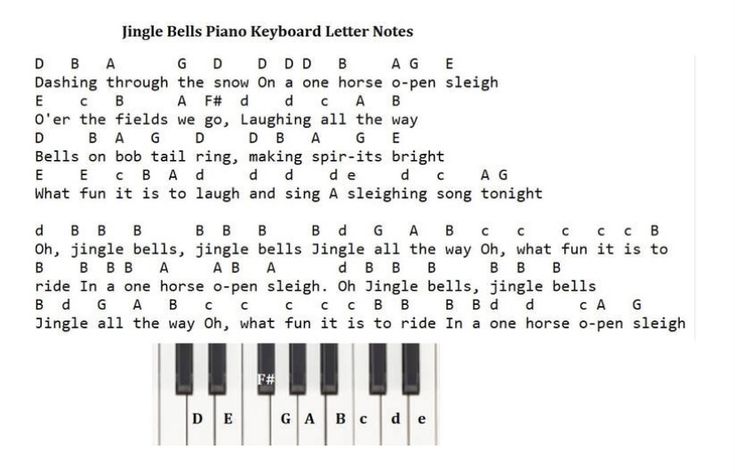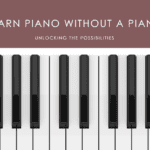The opening notes of “Jingle Bells” instantly evoke feelings of holiday cheer and nostalgia. As one of the most recognizable Christmas songs, learning to play this classic on the piano is a rite of passage for many beginners. But between finding the right keys and coordinating both hands, tackling “Jingle Bells” can also be an intimidating endeavour.
In this comprehensive guide, you’ll discover everything you need to start dashing through the snow on piano. From breaking down the simple melody and chord progressions to handy tricks for nailing the left-hand accompaniment pattern, you’ll have access to detailed tutorials for mastering this Christmas favourite.
More than just a step-by-step lesson plan, you’ll also uncover fun historical facts about “Jingle Bells” that make it an even more engaging song to learn. Did you know “Jingle Bells” was originally written for Thanksgiving? Or that it was the first song played in space? Fascinating tidbits like these will give you new appreciation for this holiday standard.
So get ready to jingle all the way with this fool-proof guide to playing “Jingle Bells” on piano! With the resources in this article, students of all skill levels will be decking the halls with their own renditions in no time.
| Key Takeaways |
|---|
| Start with right-hand C C C |
| Left hand C G chord accompaniment |
| Find middle C to get oriented |
| Go slowly, coordinate hands |
| Focus on steady left hand |
| Use videos, sheets, tutorials |
| Play melody louder |
| Hold long notes fully |
| Improvise for jazz sound |
| Fun historical facts |
| Written for Thanksgiving |
| First song in space |
| Great for beginners |
| Simple melody and chords |
Playing the Notes with the Right Hand
Starting Point
The right hand melody of Jingle Bells starts on the note C. To find C, locate the group of two black keys on your keyboard. The white key to the left of these two black keys is C. Place your thumb on this key to begin.
The Notes of the Right Hand
The melody of Jingle Bells in the key of C major using just the right hand is:
C C C – C C C – C E D C – – – G G G F F F E E D E – G – C C C -C C C – C E D C – – – G G G F F F A A G F E – – –
Here are the finger numbers for each note:
1 1 1 – 1 1 1 – 1 3 2 1 – – – 5 5 5 4 4 4 3 3 2 3 – 5 – 1 1 1 – 1 1 1 – 1 3 2 1 – – – 5 5 5 4 4 4 5 5 4 3 2 – – –
As you can see, you play C three times, followed by a long C, then repeat. The next phrase goes up to E, down to D, then back to C. Continue following the notes and finger numbers until you complete the melody.
Video Tutorial
Watch this video to see and hear how the right-hand melody of Jingle Bells is played:
Playing the Notes with the Left Hand
Starting Point
The left-hand accompaniment of Jingle Bells starts on the note C. To find C, locate the group of two black keys on your keyboard. The white key to the left of these two black keys is C. Place your thumb on this key to begin.
The Notes of the Left Hand
The accompaniment of Jingle Bells in the key of C major using just the left hand is:
C G C G – C G C G – C F C G – – – C G C G – C G C G – C F C G – – –
Here are the finger numbers for each note:
1 5 1 5 – 1 5 1 5 – 1 4 1 5 – – – 1 5 1 5 – 1 5 1 5 – 1 4 1 5 – – –
You play C and G together, then again, then C, F, C, G. Continue following the notes and finger numbers until you complete the accompaniment.
Video Tutorial
Watch this video to see and hear how the left-hand accompaniment of Jingle Bells is played:
Playing the Song with Both Hands
General Advice
When you’re ready, combine the right and left hand parts together. Play slowly and be patient with yourself as you learn to coordinate both hands. With practice, you’ll be able to play the melody and accompaniment together smoothly.
Difficulty: Dissociation of the Two Hands
One of the main challenges of playing with both hands is keeping them independent. The left hand has a repetitive accompaniment pattern while the right hand plays the melody. Let the left hand become automatic while you focus on the phrasing in the right hand.
Methods, Tips, and Techniques
- Look ahead in the music so both hands are prepared for what’s coming next.
- Count out loud, especially for the held notes. This will help sync the hands.
- Isolate trouble spots and slowly practice just a measure at a time hands together.
- Once comfortable, speed up gradually to the full tempo.
Video Tutorial
Watch this video to see and hear how to play Jingle Bells with both hands together:
Play Jingle Bells on Piano in 5 Minutes or Less
For those short on time, here is a condensed tutorial for learning Jingle Bells quickly:
- Right Hand: C C C – C C C – C E D C – – – G G G F F F E E D E – G – C C C -C C C – C E D C – – – G G G F F F A A G F E – – –
- Left Hand: C G C G – C G C G – C F C G – – – C G C G – C G C G – C F C G – – –
- Hands Together: Go slowly, focus on keeping left hand steady as right hand plays melody
With just 5 minutes of focused practice on the basics, you’ll be playing this Christmas classic in no time!
How to Play Jingle Bells on Piano With Letters
For those who prefer learning with letter names instead of finger numbers:
- Right Hand: C C C – C C C – C E D C – – – G G G F F F E E D E – G – C C C -C C C – C E D C – – – G G G F F F A A G F E – – –
- Left Hand: C G C G – C G C G – C F C G – – – C G C G – C G C G – C F C G – – –
Follow the letter names shown above, holding notes longer where you see dashes. With just the letter names, you can quickly learn this Christmas favourite.
Finding Middle C on the Piano
To get oriented on the piano:
- Locate the two black key group
- The white key to the LEFT of this group is Middle C
- Place your Right Thumb on Middle C to start Jingle Bells
Knowing how to find Middle C is essential for learning the keyboard. Use it to find the starting note for Jingle Bells and many other piano songs.
Jingle Bells Piano Keyboard Sheets for Beginners With Letters
Here is Jingle Bells arranged for beginners using piano keyboard diagrams with letter names:

Use the keyboard diagrams above to help visualize the letter names and reinforce learning. With the notes displayed on the keyboard, it’s easier to play Jingle Bells as a beginner.
Playing Jingle Bells on Piano With Letters Summary
In summary, to play Jingle Bells on piano using letter names:
- Find Middle C
- Right Hand plays C C C – C C C etc.
- Left Hand plays C G C G – C G C G etc.
- Use keyboard diagrams to visualize notes
- Go slow and be patient learning hands together
With these handy resources, you’ll be mastering this Christmas classic in no time!
Jingle Bells – Very Easy Piano Sheet Music & Tutorial
Use this simple piano sheet music and step-by-step tutorial to start playing Jingle Bells right away.
Right Hand – Melody
The melody is made up of simple quarter notes, half notes, and whole notes. Follow the letter names and fingering:

Tips:
- Hold the half notes and whole notes for their full value
- Bring out the melody by playing it louder than left hand
Left Hand – Chords
The chords alternate between C major and G major. Follow the letter names and fingering:

Tips:
- Keep a steady beat
- Let the left hand be more quiet to support melody
Hands together, this easy piano arrangement of Jingle Bells will have you celebrating the holidays in joyful style!
How to Play Jingle Bells in a Jazz Style
Spice up this Christmas classic by playing Jingle Bells with a jazz piano flair:
Swing Your 8th Notes
- Play 8th notes with a long-short feel instead of straight
- This adds a jazz swing rhythm
Add an Open-Swing Bass Line
- Improvise a “walking” bass line in left hand
- Focus on 1, 3, 5, 6, and 8 of each measure
Syncopate Your Melody
- Shift melody notes to fall on off-beats
- Creates a syncopated, jagged feel
Add Chord Extensions and Alterations
- Use 9ths, 13ths to expand beyond basic triads
- Alter chords, like G7 instead of G
Putting it All Together: Jazz Arrangements for Piano
With these tips, you can explore your own jazz piano arrangements of Jingle Bells. Listen to jazz versions to get inspired, then improvise!
Weird Fun Facts about “Jingle Bells”
- Originally called “The One Horse Open Sleigh” when published in 1857
- Not written as a Christmas song! Premiered on Thanksgiving
- Jingle Bells was the first song played in space, on a 1965 Gemini 6 mission
- Soviet cosmonauts played it in space during the Cold War as a symbol of peace
- The melody mimics the jingling sound bells make on a sleigh
Questions about Learning How to Play “Jingle Bells” on Piano
How do I start learning Jingle Bells?
- Find Middle C and start with the right-hand melody, one note at a time
What are the chords to Jingle Bells?
- The chords are C major and G major
How can I play Jingle Bells by ear?
- Listen to the melody and match on piano
- Figure out left hand pattern by ear
- Let your ear guide you more than reading music
What are the lyrics to Jingle Bells?
- “Dashing through the snow…”
- Search for lyrics online or in Christmas songbooks
What are the notes to Jingle Bells?
- Right Hand: C C C – C C C etc.
- Left Hand: C G C G – C G C G etc.
The History of Jingle Bells
- Written by James Lord Pierpont in 1857
- Originally called “The One Horse Open Sleigh”
- Published in 1859 under the title “Jingle Bells”
- Became a Christmas favourite, but not written as a holiday song
- Jingle Bells melody mimics bells jingling on a sleigh
- First song played in space in 1965 during Gemini mission
- Has been recorded by hundreds of artists in many styles
Is Jingle Bells an Easy Song for Beginners?
Yes, Jingle Bells is one of the easiest Christmas songs for beginners to learn on piano:
- Melody is simple, mostly stepwise motion
- Mainly quarter notes, half notes, whole notes
- Does not require complex rhythms
- Chords are basic – just C major and G major
- Left hand is repetitive accompaniment pattern
- Relatively slow tempo
With its repetitive nature and diatonic melody, Jingle Bells is an ideal first holiday song to learn on piano. The simple arrangements help beginners gain confidence playing hands together.
How Many Notes Are There in Jingle Bells
There are approximately 148 total notes in a basic arrangement of Jingle Bells:
- Right Hand: 74 notes
- Left Hand: 74 notes
This includes:
- 108 quarter notes
- 20 half notes
- 18 whole notes
- 2 dotted half notes
The manageable length and repetitive patterns in Jingle Bells make it perfect for beginners starting out on piano. With focused practice over time, anyone can learn to play this beloved





